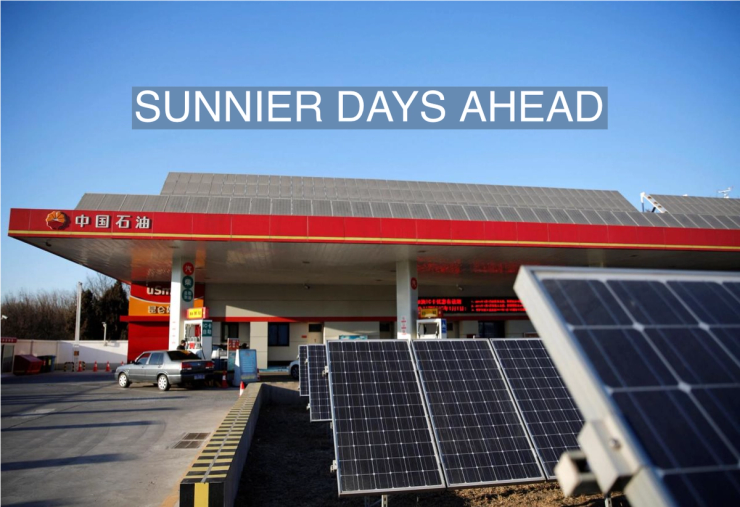The News
China will strive to reduce carbon dioxide emissions by 3.9% for every unit of GDP over the next year, according to the State Council’s 2024-25 carbon reduction emission plan, accounting for a total of about 260 million tons of carbon dioxide over the next two years.
To achieve this, the State Council called for expanded renewable energy sources and infrastructure to account for 18.9% of energy use in 2024, increasing to 20% in 2025. In addition to reducing coal use by 50 million tons, Beijing also floated a ban on over-excessive steel manufacturing — crucial for China’s green tech boom but notoriously polluting.
These ambitions are part of China’s 14th five-year-plan, dubbed “14FYP,” of reducing total CO2 emissions by 18% for every unit of GDP and overall energy use by 13.5% per GDP unit between 2021 and 2025. The plan is a step on the road to China’s ultimate goal to peak emissions by 2030 and reach carbon neutrality by 2060.
While some argue that China’s emissions may have already peaked, the new plan suggests Beijing knows it still has a long way to go.
SIGNALS
New plan suggests Beijing knows it can’t meet targets
Preliminary calculations based on the new figures by London Stock Exchange Group carbon analyst Yan Qin, China will “slightly miss” those targets. That’s largely due to China’s economy growing above the predicted 5% figure in 2023 (and likely 2024), “resulting in higher energy consumption” that is needed to keep the economy booming, Qin said. And even though the slump in China’s real estate sector means steel manufacturing is down, “emissions will easily rebound” as Beijing instead gives stimulus packages to other energy-intensive industries that can compensate for the real estate decline, Qin argued.
The electricity grid is not built for renewables
The National Energy Administration is also wary of rapid expansion because the country’s power grid is just not built for fluctuating renewable energy sources. China’s grid lacks the infrastructure to store excess renewable energy, and its pricing system has no mechanisms to incentivize customers to use renewable energy during peak production periods, as Semafor previously reported. Beijing needs top-down reforms if it wants to accelerate decarbonization efforts and ensure “energy supply and demand max out at the same time,” Dave Jones of the Ember Climate think tank told Semafor.
And yet, China is building more coal plants
The State Council calls for “eliminating” coal-powered facilities by 2025, but China has, paradoxically, been one of the few places where coal expanded in the last year, increasing its capacity by 50 gigawatts, according to Global Energy Monitor. These plants are a “major impediment to reducing global carbon emissions,” yet they might not see much use, according to Hannah Ritchie who writes the Sustainability by the Numbers Substack. China only uses coal power periodically as “peaker plants” when demand outweighs renewable energy supply. Ultimately, the new construction may be a means to boost local economies, Ritchie argued.



